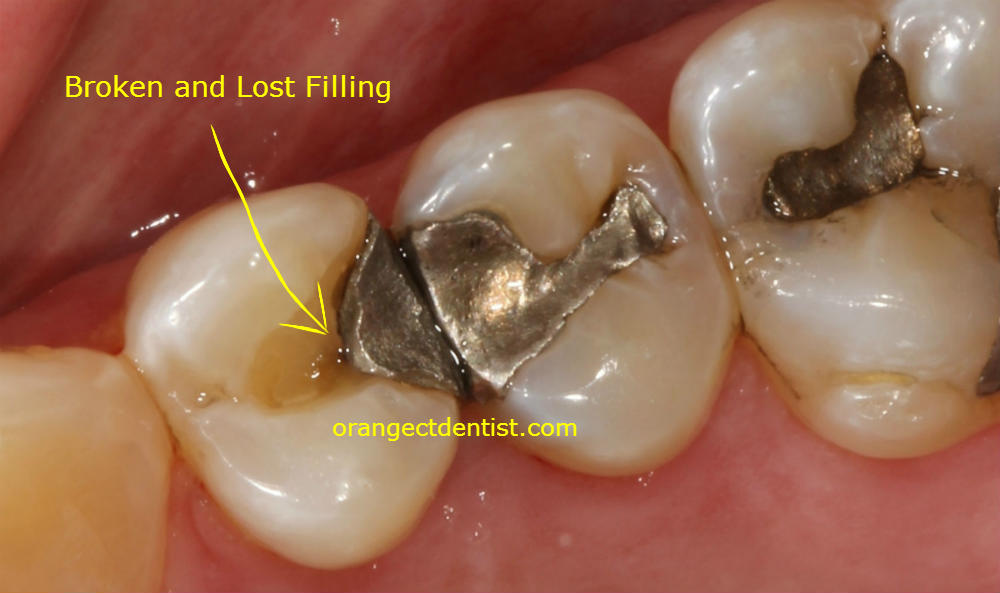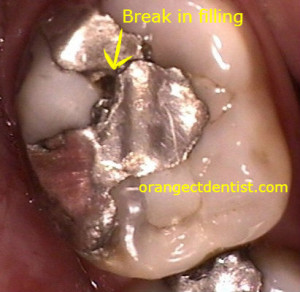A lost or broken filling is an unfortunate occurrence. Anytime a dentist places a filling in a tooth, there is always the potential for some or all of the material to dislodge. Even with modern dentistry and white fillings that actually have a chemical bond to teeth, breakage can occur.
Broken Filling Photograph

A broken silver amalgam filling. This patient lived in Woodbridge, CT. Photo by Dr. Nicholas Calcaterra
The photograph above shows a broken mercury silver filling. Fortunately, she did not have any symptoms. She sought treatment promptly. She ultimately had some of her silver fillings replaced with white ones.
Why Dental Restorations Dislodge
Restorations (the more formal term for a filling) can dislodge for a number of reasons. These reasons can include:
- Dental decay forming underneath. This weakens the tooth and can compromise the chemical bond or mechanical retention of the restoration.
- Heavy chewing pressure over time can weaken the silver or white material leading to breakage.
- A grinding or clenching habit that develops that was not there when the filling was placed.
- Changes in diet, medications, or medical conditions that affect all the teeth.
- Certain technique errors during the placement of the restoration.
- And MANY other reasons.
Symptoms of a Lost Filling
- Increased sensitivity to hot, cold, or sweets in a particular tooth.
- A rough or jagged area that you can consistently feel with your tongue.
- Difficulty flossing in one particular area where you’ve never had difficulty before.
- A piece of tooth or filling that you can actually move with your tongue.
- Or an area of your tooth you can actually see with a missing part or where you actually break the filling while eating and find the offending piece!
Treatment of Broken Fillings
The best way to handle this is for you to visit our office in Orange, CT for an exam. From there, we can recommend the appropriate treatment. In most cases, a new white filling is placed. If there are larger cracks or a significant portion of the tooth and/or filling dislodged, a crown may be necessary. If significant pain is present, then the tooth may need a root canal.
Do not delay receiving dental treatment. Many teeth start out with a small break and need only a filling. But patients delay it and the problem gets bigger, ultimately leading to a need for the tooth to be extracted and then a dental implant.

